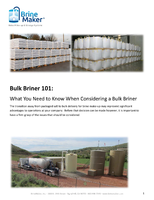Meeting focused on improving existing buildings' efficiency.
Press Release Summary:
At its 2009 Annual Conference, ASHRAE launched the prototype of its Building Energy Quotient building energy labeling program, introduced a year-long focus on existing buildings, and kicked off the Commissioning Process Management Professional certification program. Gordon Holness, ASHRAE president, noted the increase in renovation versus building new and said that "now is the perfect time for ASHRAE to focus on reducing energy consumption in existing buildings."
Original Press Release:
Existing Buildings Highlighted at ASHRAE Meeting
ATLANTA - The need to improve the energy efficiency of existing buildings was highlighted at the ASHRAE 2009 Annual Conference held in Louisville.
At the meeting, ASHRAE launched the prototype of its Building Energy Quotient building energy labeling program, introduced a year-long focus on existing buildings and kicked off the Society's most highly anticipated certification program to-date, Commissioning Process Management Professional
Some 1,530 attendees came together to support the Society's mission of advancing HVAC&R to serve humanity and promote a sustainable world.
"In these economic times, dollars for new construction have dwindled," said Gordon Holness, ASHRAE president. "Given that more people are renovating than building new, now is the perfect time for ASHRAE to focus on reducing energy consumption in existing buildings to save money and reduce carbon emissions."
Gordon Holness, P.E., Fellow ASHRAE, Life Member, was inducted as the Society's president for 2009-10. Through his presidential theme, Sustaining Our Future by Rebuilding Our Past, Holness addresses energy efficiency in existing buildings.
"The vast majority of buildings that will exist in the year 2030 exist today," Holness said. "If we are to have a material impact on overall energy use, it is through renovation of existing building stock. While existing buildings present greater challenges, they offer us a greater opportunity to significantly impact our overall national energy demand, reduce our dependence upon imported oil and gas and minimize our carbon footprint. If ASHRAE is looking to build a sustainable future, we can set the foundations of that right now."
To read his presidential address, visit ashrae.org/holness.
The Society launched its Building Energy Quotient program, known as Building EQ, which will include both asset and operational ratings for all building types, except residential. ASHRAE is working with major real estate developers to implement the label prototype this fall with a widespread launch of the full program in 2010. For more information, visit www.buildingeq.com.
ASHRAE Learning Institute courses related to sustainability and high-performance building design were top drawers, including Basics of a Proposed Standard on High-Performance Green Buildings (Standard 189.1), Engineering for Sustainability: Understanding Air-to-Air Energy Recovery Technology and Applications, and The Commissioning Process and Guideline 0.
Top-attended technical program sessions included the poster session; Adapting Buildings and Cities for 3°C of Climate Change; To LEED or not to LEED: What are the IAQ and Energy Implications?; Proper OA Design Criteria for Sustainable Design and Efficiency; Real World BIM for the HVAC Engineer; Cities Are Not Sustainable: A Debate; Defining the Contribution of Fans in Achieving the Goals of ASHRAE Standard 90.1; Design of Hybrid Ground Source Heat Pump Systems; Optimizing of DX-DOAS Systems; How to Make Your Sustainable Building Work; Use of Liquid Desiccants for Improved Air Quality and Ventilation Air Energy Savings; Energy Efficiency and Application of Water to Water Heat Pumps in Residential Installations; Back to Basics - Motors and VFDs; Cooling of Telecom Centers; Free Cooling Opportunities for Data Centers; Avoiding Moisture and Humidity Problems During Part-Load Hours; Design Tools for Modeling Hybrid Geothermal Heat Pump (GHP)Systems; Energy Modeling for Large Building Systems; Successes and Challenges of Sustainable Building Metrics Implementation; and Is 30% More Outdoor Air Really Better?
Top-selling publications at the meeting were Guideline 0-2005, The Commissioning Process, Guideline 1.1-2007, HVAC&R Technical Requirements for the Commissioning Process, the ASHRAE Pocket Guide; ANSI/ASHRAE/IESNA Standard 90.1-2007, Energy Standard for Buildings Except Low-Rise Residential Buildings, and its User's Manual; the Load Calculations Applications Manual; and Best Practices for Datacom Facility Energy Efficiency, second edition .For more information on these books and more, please visit http://www.ashrae.org/bookstore.
ASHRAE also launched its fourth certification program, Commissioning Process Management Professional, with some 80 people taking part. The examination will be available on computer at testing centers around the world by the end of August. For more information, visit http://www.ashrae.org/CPMP.
At the meeting, the Host Committee displayed its sustainability footprint project - designed to leave behind a lasting sustainable footprint in the cities where the Society's meetings are held. Thanks to funds and equipment donated by members and others, 2 kilowatt of photovoltaic panels with an inverter to supply electricity was installed at Jeff Street Baptist Community at Liberty in Louisville. The church is part of the Louisville Kilowatt Crackdown program, which is a competition that promotes energy conservation within the business district of Louisville.
ASHRAE will hold its 2010 Winter Conference, Jan. 23-27 in Orlando, accompanied by the AHR Expo, Jan. 25-27.
ASHRAE, founded in 1894, is an international organization of some 50,000 persons. ASHRAE fulfills its mission of advancing heating, ventilation, air conditioning and refrigeration to serve humanity and promote a sustainable world through research, standards writing, publishing and continuing education.




